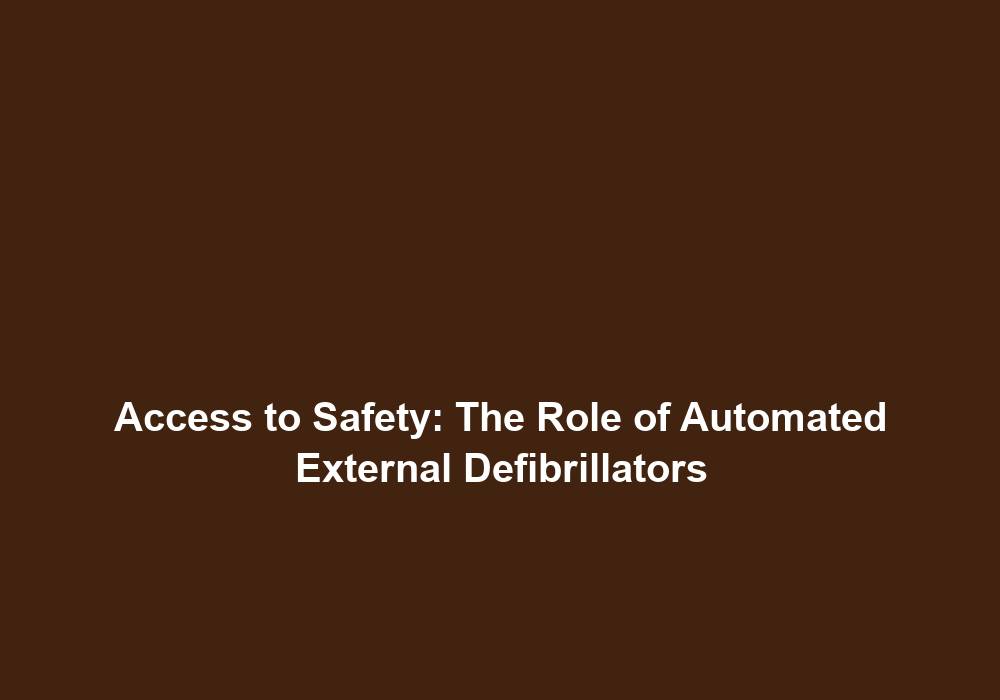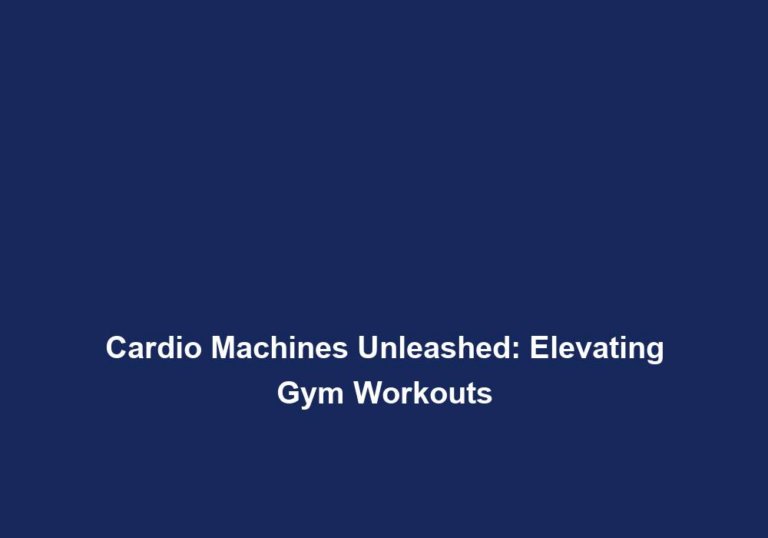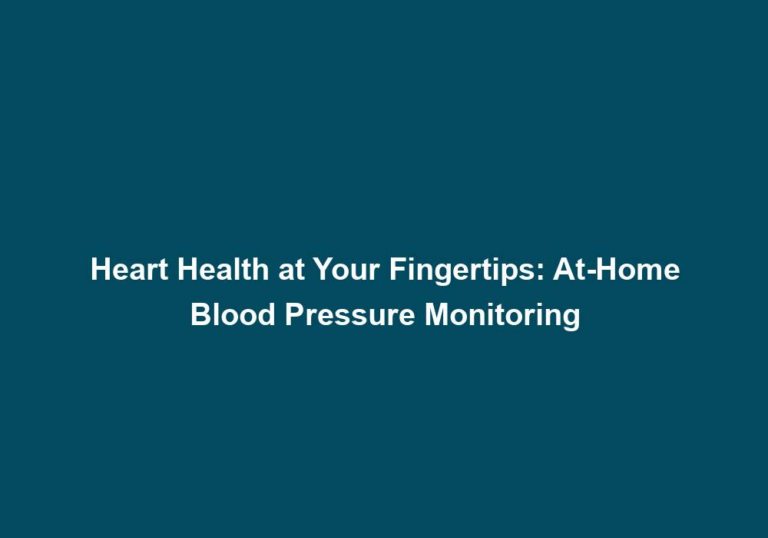Access to Safety: The Role of Automated External Defibrillators
In today’s fast-paced world, ensuring the safety of individuals has become a top priority. When it comes to emergencies like sudden cardiac arrest (SCA), time becomes a critical factor in saving lives. This is where Automated External Defibrillators (AEDs) play a vital role in providing immediate help to those in need. In this article, we will delve into the significance of AEDs and how they contribute to ensuring access to safety in various environments.
The Importance of Automated External Defibrillators (AEDs)
Automated External Defibrillators (AEDs) are portable electronic devices that can analyze a person’s heart rhythm and deliver an electric shock to restore a normal heartbeat. This immediate intervention can significantly increase the chances of survival for someone experiencing SCA. AEDs are designed to be user-friendly, even for individuals without medical training. They provide step-by-step instructions through visual and voice prompts, allowing bystanders to provide potentially life-saving assistance until professional medical help arrives.
The ease of use of AEDs is crucial in emergency situations. When someone experiences SCA, every second counts. The simplicity of AED operation enables anyone, regardless of their medical background, to confidently use the device and administer potentially life-saving treatment. Visual and voice prompts guide the user through the process, ensuring correct usage and minimizing the risk of errors. By empowering bystanders to take immediate action, AEDs can bridge the gap between the onset of SCA and professional medical intervention.
Rapid response is vital when it comes to cardiac emergencies. The time between SCA onset and defibrillation is critical, as every minute without defibrillation decreases the survival rate by approximately 7-10%. Having accessible AEDs on-site can significantly reduce response times and improve the chances of survival. Immediate access to an AED increases the likelihood of defibrillation within the crucial first few minutes, known as the “golden period.” By reducing the time it takes to initiate defibrillation, AEDs play a pivotal role in improving patient outcomes and saving lives.
Access to AEDs in Public Places
To enhance public safety and increase the likelihood of immediate defibrillation, AEDs should be readily available in various locations. Here are some key environments where access to AEDs is crucial:
1. Schools and Educational Institutions
In educational settings, the well-being of students, teachers, and staff is of utmost importance. Installing AEDs in schools ensures quick access to life-saving equipment, especially during sports events or other physical activities where the risk of sudden cardiac arrest may be higher. It is imperative to train staff members and teachers in AED use to further improve response times and increase the chances of survival.
In addition to placement in schools, it is crucial to consider AEDs in other educational institutions such as colleges and universities. These environments often host large gatherings and physical activities, increasing the likelihood of cardiac emergencies. By providing AEDs and training individuals on their usage, educational institutions can create a safer environment for their students, faculty, and visitors.
2. Workplaces and Offices
Many adults spend a significant portion of their day in the workplace. Therefore, having AEDs readily available in offices and workplaces is essential. Cardiac emergencies can occur at any time, and the immediate availability of an AED can be the difference between life and death. Companies should prioritize investing in AEDs and providing proper training to employees on their usage.
In addition to placement in traditional office settings, it is important to consider AEDs in industrial workplaces, construction sites, and other high-risk environments. These settings may have an increased likelihood of cardiac emergencies due to factors such as physical exertion or exposure to hazardous substances. By ensuring AEDs are easily accessible in these workplaces, employers can protect the well-being of their employees and minimize the potential impact of cardiac emergencies.
3. Public Facilities and Recreational Areas
Public spaces like airports, shopping malls, stadiums, and parks are frequented by large numbers of people daily. Placing AEDs in strategic locations within these facilities ensures that anyone experiencing SCA can receive prompt assistance. Ensuring the visibility and accessibility of AEDs in such areas is crucial and can save countless lives.
In addition to placement in high-traffic public areas, it is important to consider AEDs in specific recreational areas such as swimming pools, sports fields, and gyms. These locations often involve physical exertion, which can increase the risk of cardiac emergencies. By providing AEDs in these areas and training individuals on their usage, the chances of immediate response and successful defibrillation can be significantly improved.
4. Residential Communities and Housing Complexes
While most individuals perceive SCA as a problem primarily affecting older adults, it can occur at any age. Residential communities and housing complexes should consider having AEDs available in common areas or community centers. Training residents in AED use and creating awareness about their presence can contribute to a safer living environment.
In addition to placement in residential communities, it is important to consider AEDs in other housing complexes such as apartment buildings and retirement communities. These settings often house individuals with varying medical conditions and age groups, making them susceptible to cardiac emergencies. By providing AEDs and educating residents on their usage, housing complexes can create a sense of security and empower individuals to respond effectively during critical situations.
Guidelines for AED Placement and Maintenance
To maximize the effectiveness of AEDs and ensure their optimal utilization, certain guidelines should be followed:
-
Accessibility: AEDs should be easily accessible and clearly visible in their designated locations. They should be placed in areas where potential cardiac emergencies are likely to occur, such as high-traffic areas or places where physical activities are common. Additionally, proper signage should be displayed to indicate the presence and location of AEDs, ensuring that they can be quickly located in times of need.
-
Training and Education: Proper training should be provided to individuals who are likely to encounter SCA emergencies, including employees, teachers, and residents. This training should cover AED usage, CPR (Cardiopulmonary Resuscitation) techniques, and emergency response protocols. By providing comprehensive training, individuals can confidently and effectively respond to cardiac emergencies, ensuring the best possible outcomes.
-
Regular Maintenance: AEDs should undergo regular maintenance checks to ensure their functionality and reliability. Routine inspections and replacement of expired batteries or pads are essential to guarantee that the device is always ready for use. It is important to establish a maintenance schedule and adhere to it strictly, ensuring that AEDs are in optimal condition to provide life-saving intervention when needed.
-
Awareness Campaigns: Conducting awareness campaigns and educating the general public about AEDs can contribute to a more informed and prepared society. These campaigns can help dispel any myths or fears surrounding AED usage and encourage individuals to take action during cardiac emergencies. By raising awareness, communities can foster a culture of preparedness and empower individuals to play an active role in saving lives.
In conclusion, the availability and accessibility of Automated External Defibrillators (AEDs) play a crucial role in ensuring swift and effective response to sudden cardiac arrest (SCA) emergencies. By strategically placing AEDs in various environments such as schools, workplaces, public facilities, and residential communities, we can significantly improve survival rates and provide a safer environment for all. Regular maintenance, proper training, and awareness campaigns are key to maximizing the potential of AEDs and empowering individuals to save lives in critical situations.







